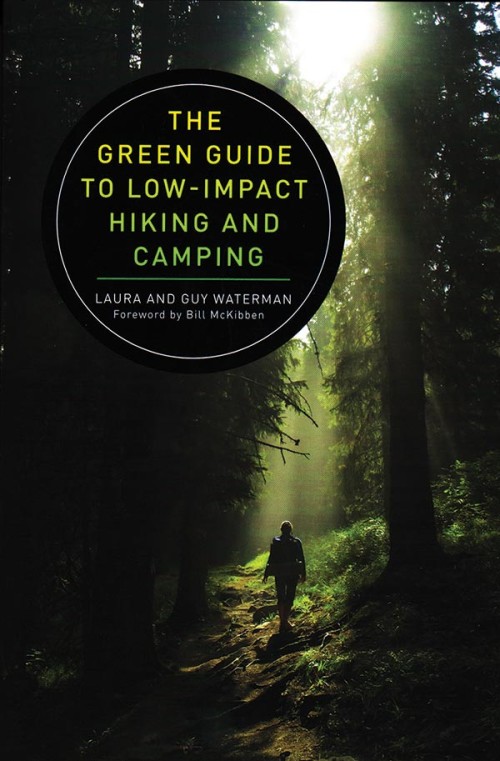by Laura and Guy Waterman
The Countryman Press, 2016
In 1979, Laura and Guy Waterman came out with the acclaimed Backwoods Ethics, a book that advocated low-impact hiking, camping, and alpine management. This is a rerelease of that book with a new title. The Watermans were avid hikers, climbers, back-to-the-landers, environmental advocates, and coauthors of several books on outdoor recreation, including Forest and Crag, the bible on the history of hiking in the Northeast. Guy died in New Hampshire’s White Mountains in 2000. Laura lives near their former homestead in Vermont and continues to write.
The Green Guide to Low-Impact Hiking and Camping is a valuable book that traces the evolution of an environmental consciousness among hikers and backcountry campers and argues for its importance. Full of history, many of the issues the book addresses are still relevant today.
In the first section, a humorous look at hikers, the Watermans poke fun at themselves and fellow peak baggers, Appalachian Trail thru-hikers, winter campers, and legends such as Alden Partridge, who in the early 1800s reportedly walked 200 miles in four days from his home in Vermont to Massachusetts and back. A list of axioms for winter camping, created by their hiking buddy Win Thratchett, complement the Watermans’ entertaining prose. Axiom Seven: “If, on a hike of eight hours’ duration, you keep your parka hood up for seven hours and 55 minutes, the exact moment at which a tree branch laden with snow will drop its load from a point directly above the back of the neck can be determined to within five minutes.”
Next comes an in-depth discussion of the development of low-impact practices in the second half of the twentieth century, such as transitions in cooking from campfires to backpacking stoves, sleeping in hammocks rather than tents, minimizing the use of lug-soled boots, and limiting group size. The goal is “not so much a set of convenient and inflexible rules as an invitation to think about our actions and try to be a little less of the problem and a little more of the solution.” The Watermans describe the fine points of trail tending and give examples of stewardship initiatives like the Northeastern Alpine Stewardship Gathering (a movement by rock climbers to stop driving metal pitons into cliffs) and their own volunteer work to protect alpine vegetation on the White Mountains’ Franconia Ridge.
The book finishes by deliberating on the impacts of four unresolved subjects: bushwhacking, dogs, bolting by rock climbers, and winter camping. In the introduction, Laura Waterman provides updates on these issues – now better managed – and briefly touches on how new technology like cell phones, GPS, and improved gear are affecting the backcountry experience. There is much more room for updates and discussion of current backcountry practices and management challenges. Appalachian Trail shelters now glow at night from hikers’ tablets and smartphones. Backcountry managers wrestle with proposed energy development projects. Skiers cut vegetation to create their own lines. Yet “leave no trace” principles have been adopted widely by the hiking community.
This book played an important role in shaping a new ethic among hikers and campers, and it is good to see that it will stay in print. As Bill McKibben writes in the foreword, “The payoff for conscientiousness...will be connection. You’ll have an opportunity to actually fit in with a place, to feel its tempo, to sense what it’s like without your overwhelming presence.”


